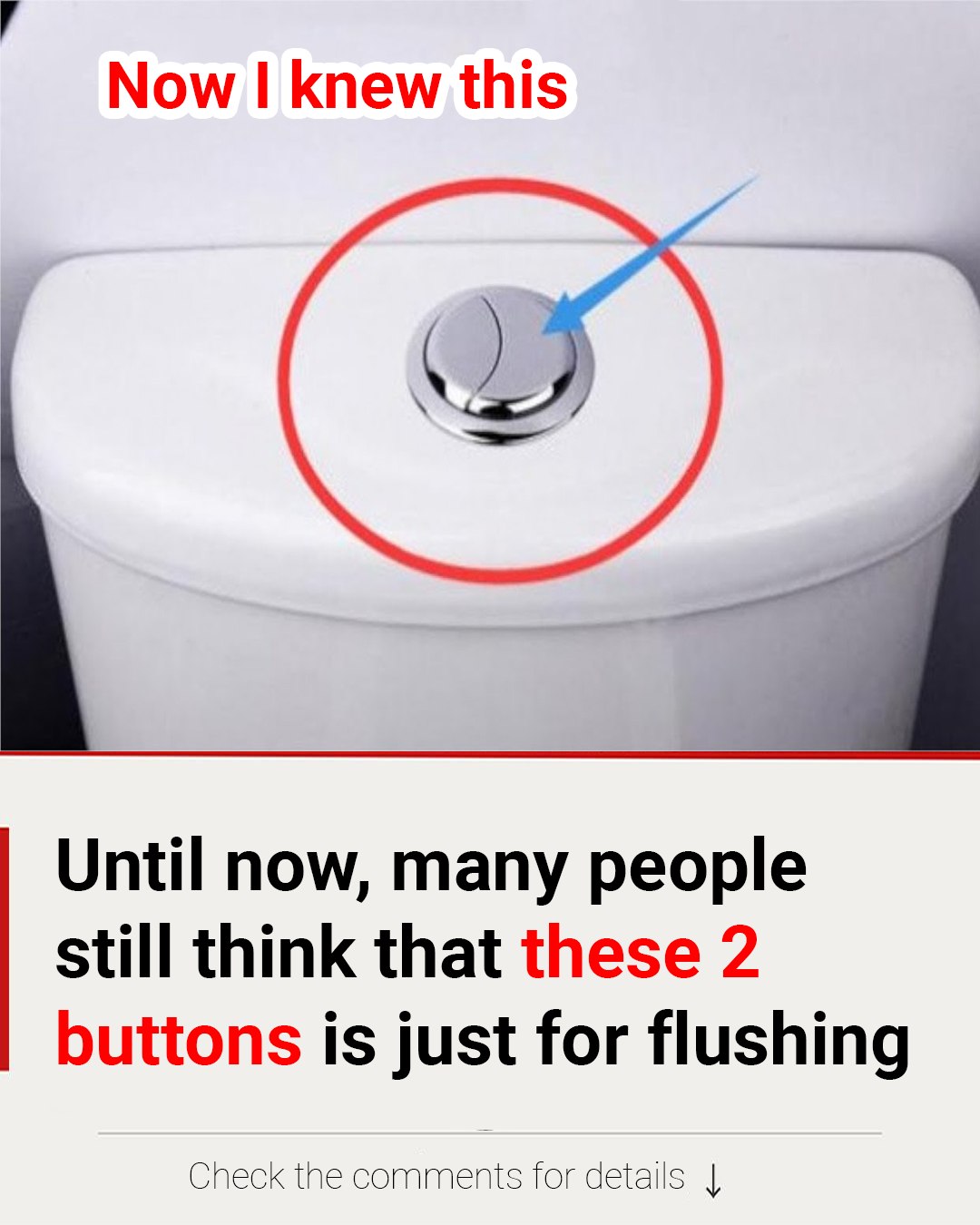ADVERTISEMENT
Title: Many People Still Think That These 2 Buttons Are Just for Flushing: The Truth Behind the Dual-Flush Toilet Buttons
If you’ve ever walked into a bathroom with a dual-flush toilet, you may have noticed the two buttons on the toilet tank. One is often labeled with a small icon, while the other is marked with a larger icon. Many people assume these buttons are just for flushing – but there’s more to them than meets the eye. Understanding the real purpose behind these buttons can save water, reduce your utility bills, and help promote more sustainable practices in your home.
So, let’s dive into the fascinating world of dual-flush toilets and learn why these two buttons do much more than just flush the toilet!
What is a Dual-Flush Toilet?
A dual-flush toilet is designed to offer two different flushing options: one for liquid waste and another for solid waste. This dual functionality helps save water by using less water when only liquid waste is flushed, and more water when solid waste needs to be cleared.
The two buttons are typically labeled as follows:
- The Smaller Button: This button is typically for a half flush, which uses less water for liquid waste.
- The Larger Button: This button is usually for a full flush, which uses more water to ensure that solid waste is completely flushed away.
The dual-flush system is one of the simplest and most effective ways to reduce water usage in your home while still maintaining proper hygiene and toilet function.
Why Do These Buttons Matter?
Now that you know what the buttons do, let’s explore the important reasons why understanding them is crucial:
1. Water Conservation
One of the most significant benefits of a dual-flush toilet is water conservation. According to the Environmental Protection Agency (EPA), older toilets can use up to 3.5-7 gallons of water per flush. A dual-flush toilet uses 1.1-1.6 gallons for liquid waste (half flush) and 1.6-2 gallons for solid waste (full flush).
By opting for the half flush whenever possible, you can drastically reduce your water consumption and save up to 4,000 gallons of water per year—a huge advantage, especially in regions that are water-scarce or facing drought conditions.
2. Lower Utility Bills
Since water consumption directly affects your water bill, using the dual-flush toilet effectively can lead to lower monthly utility bills. By using less water for liquid waste, you’ll notice a significant reduction in your water usage, which translates to lower costs. If you have a large family or if your household flushes the toilet frequently, switching to a dual-flush system can add up to substantial savings over time.
3. Better for the Environment
Less water usage isn’t just good for your wallet; it’s also great for the environment. Reducing water consumption helps conserve precious natural resources and can lead to a reduction in the energy required for water treatment and pumping. In areas where water is a limited resource, every drop counts, and using a dual-flush toilet is an easy step toward living more sustainably.
4. Improved Hygiene
The dual-flush system doesn’t just save water – it also ensures that your toilet is functioning properly. A full flush will easily clear solid waste from the bowl, keeping the toilet clean and odor-free. With the half flush, you get enou
